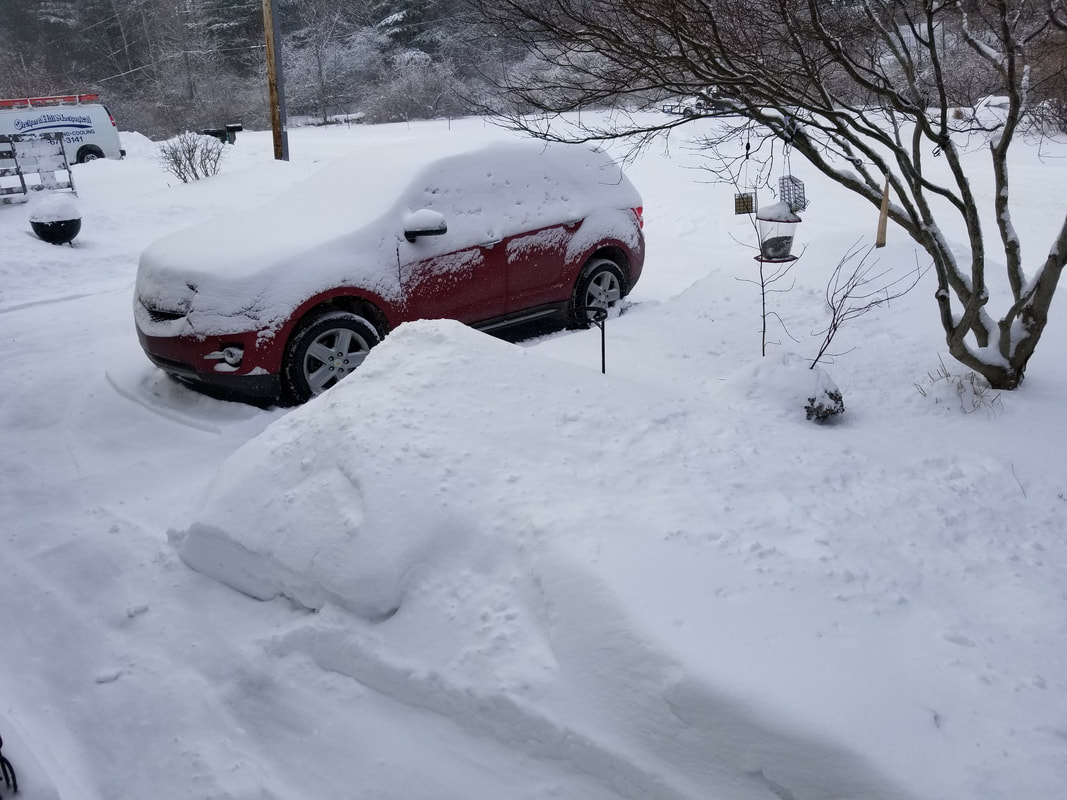|
Helpful hints for kids, elderly, and everyone else
Spectrum Health provides tips on keeping the elderly safe in the extreme cold Most healthy adults can feel when their hands/feet are getting too cold and take appropriate measures to stay warm. Older adults with neuropathy may have difficulty feeling this, and therefore are more susceptible to frostbite. Older adults also lose body heat much quicker than younger adults and this makes them much more susceptible to hypothermia. 5 tips to keep older adults safe in the extreme cold: · Wear warm coats and well insulated socks, gloves and hats when you are out and about. · Make sure thermostats are set to 68-70 degrees Fahrenheit. · Dress in layers. Wear a sweater even while indoors and wear socks with non-slip grips. This will help minimize heat loss and reduce the risk of falling. Wear long underwear or warm pajamas while sleeping as well. · If you have an elderly neighbor, family member or friend that is living alone, check on them. Check to make sure the furnace is working and that they are stocked up on food and supplies. · Limit time spent outdoors. It does not take long in these extreme temperatures for hypothermia and frostbite to set in. Warning signs of hypothermia: cold feet and hands that can be prickly or painful, puffy or swollen face, pale skin, shivering, slower than normal speech, acting sleepy, being angry or confused, moving more slowly, slow and shallow breathing, and loss of consciousness. Please call 911 if you believe someone is suffering from hypothermia. Helen DeVos Children’s Hospital provides tips to keep your family safe in the extreme cold With a layer of fresh snow on the ground, children will certainly want to play outside. However, with extreme cold temperatures and wind chills, parents need to know how to prevent dangerous cold weather exposure and be ready to respond appropriately at the first sign of problems. Top tips to keep your kids safe: CAUTION: When the temperatures drop as low as are expected, most schools say -20 wind chill or colder, “the best advice is to keep your children inside and busy with indoor activities,” says Hoekstra. Clothing: Problems arise when infants and children are not dressed properly. They should be dressed in several thin layers to stay warm and dry. Adequate outdoor clothing includes thermal long underwear, turtlenecks, at least one shirt, pants, sweater, coat, warm socks, boots, gloves or mittens and a hat. Hypothermia: This condition develops when a child's temperature falls below normal due to exposure to cold. It often happens when children are playing outdoors in extremely cold weather without wearing proper clothing or when clothes get wet. As hypothermia sets in, the child may shiver and become lethargic and clumsy. A child’s speech may become slurred and body temperature will decline. Call 911 immediately if you suspect your child is hypothermic. Until help arrives, take the child indoors, remove any wet clothing and wrap him or her in blankets or warm clothes. Frostbite: This condition happens when the skin and outer tissues become frozen. This condition tends to happen on extremities like the fingers, toes, ears and nose. Parents should watch for extremities that may become pale, gray and blistered. The child may complain that their skin burns or has become numb. If these signs of frostbite occur, parents should: · Bring the child indoors and place the frostbitten parts of the body in warm water. · Apply warm washcloths to frostbitten nose, ears and lips. · Do not rub the frozen areas or use a heating pad. · After a few minutes, dry and cover the child with clothing or blankets. · Give the child something warm to drink. · If the numbness continues for more than a few minutes, call your child’s doctor. For more information about the Safe Kids program at Helen DeVos Children’s Hospital, visit www.helendevoschildrens.org/injuryprevention.
0 Comments
Your comment will be posted after it is approved.
Leave a Reply. |
Archives
April 2024
Categories |

 RSS Feed
RSS Feed